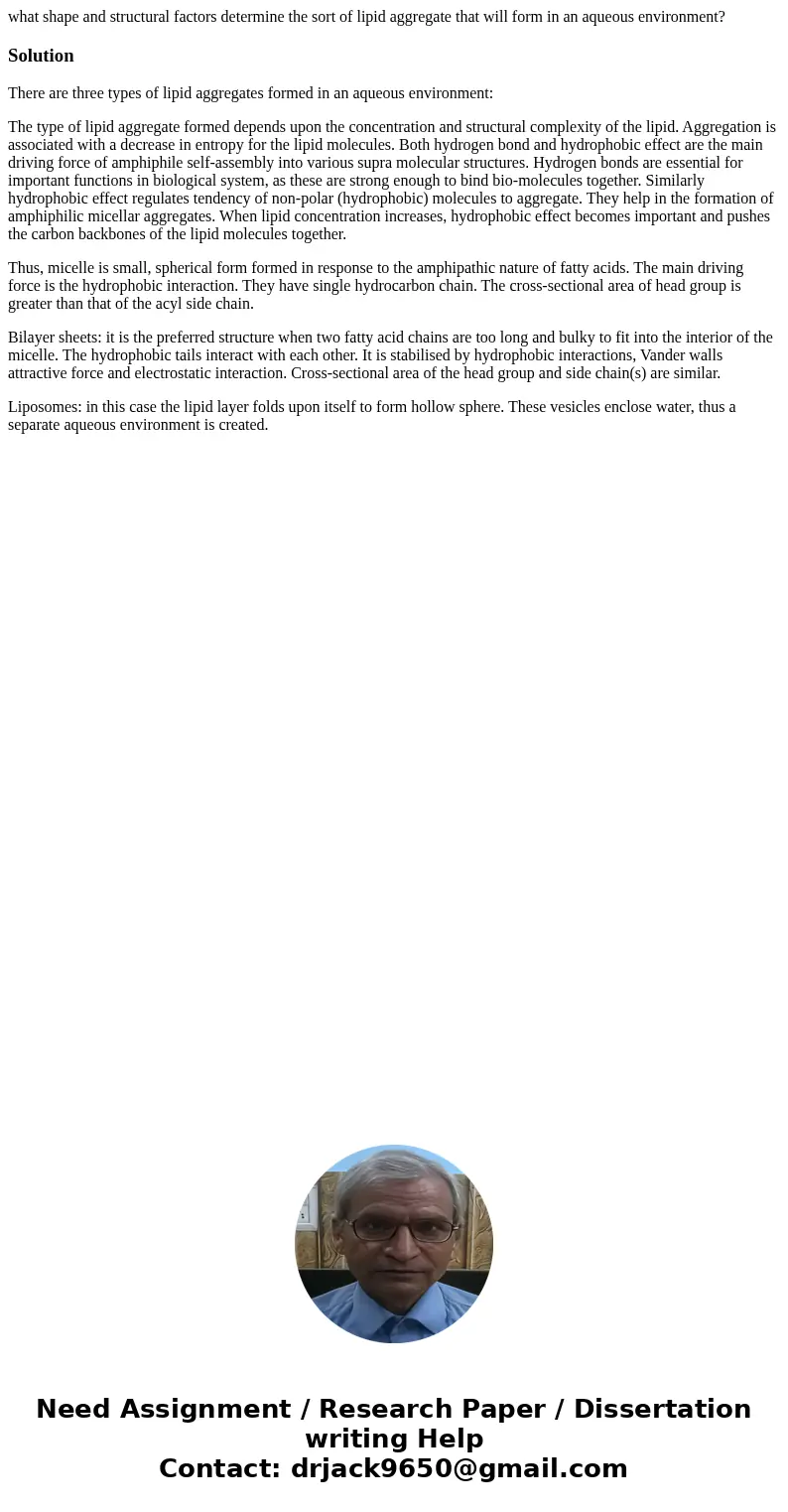what shape and structural factors determine the sort of lipi
what shape and structural factors determine the sort of lipid aggregate that will form in an aqueous environment?
Solution
There are three types of lipid aggregates formed in an aqueous environment:
The type of lipid aggregate formed depends upon the concentration and structural complexity of the lipid. Aggregation is associated with a decrease in entropy for the lipid molecules. Both hydrogen bond and hydrophobic effect are the main driving force of amphiphile self-assembly into various supra molecular structures. Hydrogen bonds are essential for important functions in biological system, as these are strong enough to bind bio-molecules together. Similarly hydrophobic effect regulates tendency of non-polar (hydrophobic) molecules to aggregate. They help in the formation of amphiphilic micellar aggregates. When lipid concentration increases, hydrophobic effect becomes important and pushes the carbon backbones of the lipid molecules together.
Thus, micelle is small, spherical form formed in response to the amphipathic nature of fatty acids. The main driving force is the hydrophobic interaction. They have single hydrocarbon chain. The cross-sectional area of head group is greater than that of the acyl side chain.
Bilayer sheets: it is the preferred structure when two fatty acid chains are too long and bulky to fit into the interior of the micelle. The hydrophobic tails interact with each other. It is stabilised by hydrophobic interactions, Vander walls attractive force and electrostatic interaction. Cross-sectional area of the head group and side chain(s) are similar.
Liposomes: in this case the lipid layer folds upon itself to form hollow sphere. These vesicles enclose water, thus a separate aqueous environment is created.

 Homework Sourse
Homework Sourse